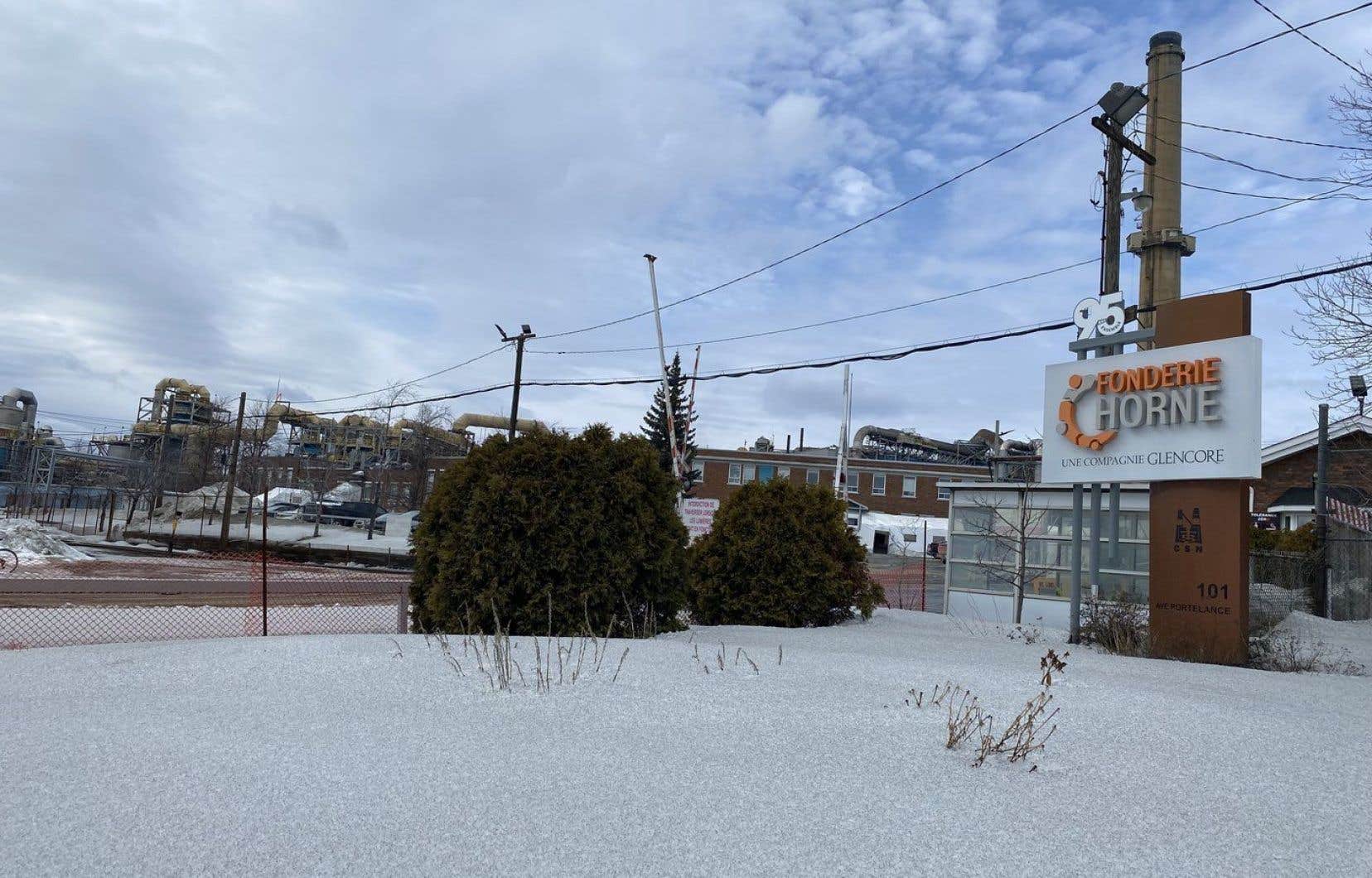The contamination of pollutants emitted by the Horne foundry would reach areas larger than the perimeter of the expropriations, according to the group Mères au Front, which presented the results of a new study Friday in Montreal.
Citizens of Rouyn-Noranda collected snow accumulated between November 2022 and March 2023 in the neighborhoods around the Horne foundry, in Abitibi.
They then had this snow analyzed by the firm Véritas, a certified laboratory, on behalf of Mères au front.
According to Daniel Green’s interpretation of the results, an environmental consultant who participated in the press conference organized by Mères au front on Friday morning, “the pollutant fallout zone is larger than the area just south of the foundry which delimits the expropriation buffer zone” announced by the government in March 2023.
Still according to Daniel Green, “the pollutants emitted by the foundry in winter fall and accumulate on snow-covered surfaces unlike other seasons, where rain and wind can wash away and lift the soil and polluting particles.”
The analysis of pollutants contained in the accumulated snow reveals the presence of arsenic, cadmium, nickel and lead in different sectors of the city, according to the firm Véritas.
Pollutants linked to cancer risks
During their presentation Friday in Montreal, the Mothers at the Front group recalled some conclusions drawn from a biomonitoring study carried out by Public Health in 2019 in Rouyn-Noranda.
These data show that the average level of lead present in the bodies of children in the Notre-Dame district, where the foundry is located, is above the Canadian average.
Also, the concentrations of arsenic in the nails of citizens of this neighborhood are on average 3.7 times higher than those observed in the population of Amos, a town in the region. A high concentration of arsenic can lead to an increased risk of cancer.
In the summer of 2022, a report from the National Institute of Public Health of Quebec (INSPQ) revealed that, over a period of 70 years, an excess number of citizens of Rouyn-Noranda, between 1 and 14, would develop cancer if the Glencore company did not reduce the concentration of arsenic produced by the smelter in the air.
In March 2023, the government required the Horne smelter to implement a plan that would allow it to meet the target of 15 nanograms of arsenic per cubic meter of air (ng/m3) from 2027, which would be, if the smelter meets the target, five times higher than the provincial environmental standard, which is 3 ng/m3.
Last spring, the government also required the company to present an action plan by 2027, to possibly reach the standard of 3 ng/m3.
